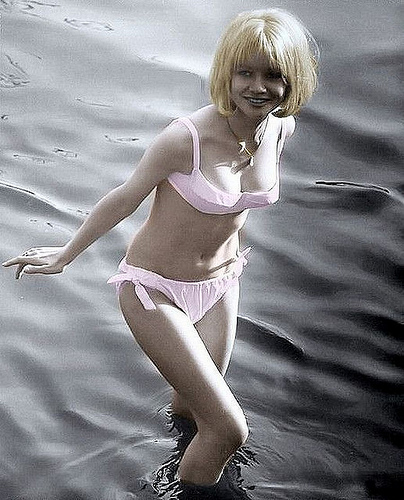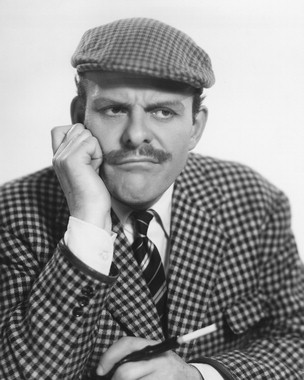|
This post is my contribution to the John Garfield 100th Birthday Blogathon, hosted by Patti at They Don't Make 'em Like They Used To. Please go here for a list of other contributors. "Tell the crew they can sleep in the next world." 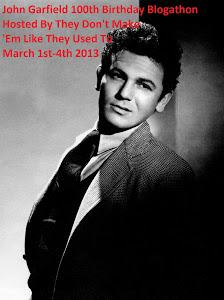 A confession...When I first started contemplating what film I should cover for the blogathon, I quickly came to a startling realization: despite his iconic status, I didn't really know much about John Garfield or his films, and in fact, only possessed one paltry title in my DVD collection, Air Force, and that was due more to my being a Howard Hawks fan than anything else. Of course, as a classic movie buff, I'm well aware of Garfield's stature and importance as a leading man, and have caught a number of his more famous films over the years. Yet for some reason, I haven't really given him the sort of thought or attention that I have to his contemporaries, like Bogart, Gable, Grant or Cagney. It's high time to remedy that oversight. For an all-too-brief 13 years and 31 films, John Garfield brought his own distinctive kind of earthy, brooding intensity and volatile charisma to the screen. His star on the ascendancy in the early 1940s, he took an ensemble role in Howard Hawks' Air Force, partly because he had always wanted to work with Hawks since seeing Scarface many years before, and mainly because he wanted to do his part for the war effort. Unable to enlist due to a weak heart, Garfield was a tireless supporter of the troops, and, along with Bette Davis, was one of the co-founders of the Hollywood Canteen. Air Force was the first of a handful of patriotic war films Garfield made (followed by Destination Tokyo and Pride of the Marines), and it's a skilled example of its kind. Even more than the Hawks' norm, Air Force is all about the group – in this case, the crew of the Flying Fortress Mary Ann, who we meet in an extended opening. Such is the emphasis of the team over the individual that the opening cast credits list the characters by position rather than name (Pilot, Co-Pilot, Navigator, etc.). This is even made explicit in the dialogue, as Capt. Quincannon (John Ridgely) tells Joe Winocki (Garfield): "We need you just like we need the whole gang. It takes all of us to make this ship function. Now get this into your head - we all belong to this airplane. Every man has got to rely on every other man to do the right thing at the right time."  In typical WWII movie fashion, the crew is a melting pot of (white) America. Besides “Irish” Quincannon and (Polish?) Winocki, there's WASP-ish co-pilot Lt. Bill Williams (Gig Young, so young he's virtually unrecognizable), bombadier McMartin (Arthur Kennedy, ditto), comic relief Jewish New Yorker Weinberg (George Tobias), grizzled old crew chief Sgt. White (Harry Carey), navigator Hauser (Charles Drake), mid-western farm boy Peterson (Ward Wood) and eager new recruit Chester (Ray Montgomery). At one point, they even add a dog to the mix - a cute little pooch named Tripoli, who barks at the name "Moto." The Mary Ann is one of nine Flying Fortresses heading for Hickam Air Base in Hawaii on an unspecified yet routine mission. The squadron is more than halfway to Hawaii when they hear frantic radio signals heralding the surprise attack on Pearl Harbor. Too far away to help, the planes scatter and land at different emergency landing strips around the islands. The movie follows the crew of the Mary Ann over the first few chaotic days as America enters WWII. The men are dispatched almost immediately to Clark Air Base in Luzon, the Philippines, with a stop for refueling at Wake Island. Riding along is hotshot fighter pilot Tex Rader (James Brown). Everywhere they go is destruction, as the Japanese military's simultaneous strikes on U.S. bases have left the Americans short of men and drastically short of working airplanes. The Mary Ann and her crew have no chance to rest, but are pressed into service immediately. By this point, things start to get really hairy for our boys, as they desperately attempt to get a severely-damaged Mary Ann back up in the air before enemy forces close in... Garfield might be just another member of the crew, but he gets one of the juiciest parts. Joe Winocki has a chip on his shoulder. He was involved in a fatal accident that killed another flier and Capt. Quincannon was instrumental in getting him washed out of flight school. Now an aerial gunner, Winocki is surly and resentful. When he announces to the other crewmen "I've had enough of the army. I'm getting out next month," they all give him the cold shoulder. Under Hawks' code of the professional, there's never any love shown a quitter. But Winocki has a change of heart once he witnesses the wreckage wrought at Pearl Harbor, and like Richard Barthelmess' MacPherson in Only Angels Have Wings (1939), he redeems himself, bigtime, before the end. After a run-in with Japanese Zeroes leaves the plane in bad shape, a wounded Quincannon orders everyone to evacuate the plane and parachute to safety. Winocki stays on the ship, aiding the now passed-out Quincannon, and brings the plane in for an amazing emergency landing, without working engines or landing gear, thus demonstrating he has "the right stuff" after all.  Edward Brophy, George Tobias and "Tripoli" Edward Brophy, George Tobias and "Tripoli" Harry Carey also does wonderful work as the hard barking but soft-hearted sergeant. The scene where he learns of the death of his son, a fighter pilot fresh out of flight school, is movingly played. All the cast are rock solid, especially John Ridgely as the affable yet commanding Quincannon. This is a prototypical "manly man" picture, and only a few actresses get a brief look in, including an uncredited Ann Doran, who gives a charming cameo as Quincannon's wife. Fans of colorful character actors (and The Thin Man) will be pleased with the late arrival of Edward Brophy as a marine who ends up co-opted into service as a gunner on the Mary Ann during the film's bombing raid finale.  Air Force was the first in a five-picture deal Hawks made with Warner Bros. Jack Warner (who after the start of WWII preferred to be known as "Colonel" Warner) was gung-ho on the war effort and, along with producer Hal B. Wallis, wanted Air Force to be not only a crowd-pleasing money-maker but a film with enough patriotic fervor and realism to also please Major General Henry "Hap" Arnold, head of the Army Air Corps, who helped instigate the project. Hawks, himself a skilled flier and with several expert movies about pilots and planes under his belt, seemed a natural choice to direct. But from the beginning, making the film was fraught with problems. The studio was given full co-operation by the U.S. military, but as there was a war on, planes and other material were rather thin on the ground. Shooting started in California, with Hawks and crew forced to rent an airplane mock-up interior from Paramount to film scenes set inside the Mary Ann. Filming then moved on to Drew Field in Tampa, Florida, where things only got worse. According to Todd McCarthy's terrific biography, Howard Hawks: The Grey Fox of Hollywood: From the start, problem begat problem. The enormous lamps Howe set up to facilitate night shooting attracted swarms of insects, so that Howe was forced to erect an extra bank of lights one hundred yards away and turn it on first, which distracted the bugs long enough to allow for about one minute of shooting. Asian extras were at such a premium in Florida that in most cases local Cubans were recruited to play Japanese and Hawaiians; for certain close-ups, a few Chinese were found, and Howe, Chinese himself, submitted them to what he called the “cruel system” of lighting, or head-on illumination without any relieving or softening spotlights, resulting in a harsh, high-contrast look of evil. Engine noise drowned out much of the dialogue, planes developed problems or were called away for essential government use, rain caused delays, the crew constantly complained about being forced to live in barracks and to eat military rations, and virtually all the main actors came down with severe colds or the flu as a result of the extended waits during night shooting. To top it all off, Jack Warner was becoming irate, not only at how little footage was coming back from Florida, but at how the scenes in dailies were not necessarily those in the script. Hawks was up to his old tricks again, and in early August both Warner and Wallis ordered the director to speed things up and not change dialogue or rearrange scenes on location. (1) Hawks' leisurely, deliberate directing pace brought him into further conflict with Warner and Wallis. Hawks reacted to the continuing pressure by feigning illness. The studio heads brought in Vincent Sherman to take over directing duties, but by that point Hawks had departed from Dudley Nichol's original script so often that Wallis was forced to bring the recalcitrant director back on to finish the picture. But Hawks wasn't being difficult just for kicks. He was fighting to do the film his way, of course, but he was also determined to make it as realistic as possible. Hawks was modifying Nichols' dialogue constantly on location, partly with an eye to paring it down to the minimum and partly to make it more realistic. Hawks had the technical adviser, (Captain Samuel) Triffy, by his side at all times, and Triffy was impressed with the way Hawks was on top of every detail and made every scene come alive, turning it into “more truth than fiction.” In his determination to make the picture as authentic and powerful a portrait of aerial warfare as possible, Hawks was as demanding with his stunt fliers and crew as he was with his actors, to the point where Triffy, who flew both American and Japanese-marked planes for the filming, came to see Hawks and his allies as “ruthless! Absolutely ruthless! If they could have damaged (an) airplane in flight so I would have had an accident, they would have done it. Really! I couldn't trust them. I mean it.” When he saw the finished film, Triffy was satisfied with its military authenticity, except for the instance in which John Garfield picks up a large machine gun and brings down an attacking Japanese fighter plane. (2) Finally, after 105 days of shooting, the picture wrapped, 33 days over schedule, Hawks having shot 164 pages of Nichols' 207 page script. Air Force held its world premiere on Feb. 3, 1943, and went on to become the fourth highest grossing film of 1943, earning $2.7 million at the box office. (3)  While Air Force fits the traditional Hawksian mold, revolving around a tightly-knit group of tough professionals, it's largely absent of the usual rat-a-tat-tat, overlapping verbal patter and snappy dialogue that often characterizes his films. The director seems to have muted his personal style somewhat in order to make a film sufficiently reverent to the military cause. It's still a good war film, with plenty of incident, action and low-key but effective emotional moments, but it doesn't rank with Hawks' best work, nor with the best the WWII genre has to offer. James Wong Howe's cinematography is great, though, and he makes the most of the cramped interior bomber sets and less frequent location shooting. And the extensive second unit work, mostly aerial dogfights and battle footage, done by Sherman, B. Reeves "Breezy" Eason and several others, is very well done, and the occasional stock actual war footage is incorporated effectively to form a seamless whole.  One personal note: Living in Japan and being married to a Japanese woman, I find patriotic WWII films such as Air Force a little difficult to watch at times. All the references to "dirty Japs" and "Nips" jar on the ear a bit. These films were made in a time and under a state of mind where this sort of thing was taken for granted, and I understand and sympathize with the sentiments of that time, to the extent that I can look past the racial slurs to the inherent drama of the situation. But I was troubled by the film's clearly-stated assumption that Japanese-Americans residing in Hawaii were naturally untrustworthy and likely working for the enemy. This was a fear shared by many at the time, certainly, as the sad legacy of the Japanese-American internment camps shows. But what really galls me is the scene early on, where it's clearly indicated that Japanese-American local residents are shooting at the Mary Ann's crew while they've made an emergency landing at Maui. Utter hogwash, yet casually passed off as fact, marring the overall authenticity of the production. (To be fair, there was criticism of this aspect of the film upon its release.) Aside from this, Air Force is a well-made, engrossing WWII movie with plenty of realism, grit and tension. As for Garfield...well, while he isn't in the forefront as much as I'd like, he does excellent, underplayed work here and (along with Carey) easily stands out among the rest of the cast, bringing just the right degree of edginess to the prickly, proud yet inherently decent and courageous Winocki. Garfield had no shorter of courage in his private life, either, refusing to name names during the HUAC Communist witch hunt of the late 40s / early 50s and seeing his career and personal life unravel as a result. Spurned by the studio system for which he had toiled for years, and broken-hearted by the treatment he received, Garfield died of a heart attack in 1952 at the age of 39, yet another incredible talent lost, too young, to movie history. Source Note: (1), (2) and (3) excerpted from Howard Hawks: The Grey Fox of Hollywood, by Todd McCarthy, 1997, Grove Press. DVD Note: Air Force looks nice and crisp on Warner's DVD, and comes with a few fun special features, including an interesting 21 minute Technicolor short produced by the U.S. Army, the animated short "Scrap Happy Daffy." A great in-depth review of this film and contribution to the blogathon - as a fan of both Hawks and Garfield, I've seen the film, but don't now remember it in detail. The main things that stick in my mind are the sense of comradeship and the naturalism of the way the various members of the crew work together and don't always get on. You make a good point about the jarring slurs which are also unfortunately a feature of other patriotic World War Two films, and about the misrepresentation of Japanese Americans. I will look forward to exploring more of your reviews.
Jeff
3/2/2013 12:06:29 pm
Thanks very much, Judy! Your point about the depiction of low-key camaraderie and ease with which the various crew members go about their tasks being paramount in AIR FORCE is right on the money. The ethnic slurs were par for the course during the war, so I try not to let it bother me too much, but I can''t deny, it does make me uncomfortable sometimes. 3/1/2013 10:28:28 pm
A really terrific analysis Jeff and great to get a more personal perspective on the casual racism of wartime pics like this one. Garfield is one of my favourite actors, made a lot of really terrific movies. I think FORCE OF EVIL is the only one on Blu-ray (just got it and am doing a review soon-ish) alogn with his version of THE POSTMAN ALWAYS RINGS TWICE opposite Lana Turner, which in the circumstances is pretty faithful to Cain's powerful if tawdry original. AIR FORCE is a film I remember being very impressed by (especially the exceptional photography by Howe) but I just have to see it again now. Many of his films are available as part of the Warner Archive on-demand series (a box set was originally planned but went by the wayside) - he did several great movies with Michael curtiz including his debut, FOUR DAUGHTERS (and its informal follow-up, DAUGHTERS COURAGEOUS) and one of his last, BREAKING POINT, a criminally underrated adaptation of Hemingway's TO HAVE AND HAVE NOT that I prefer to the Hawks rendition - if Colin doesn't beat me to it and I'm doing a post on that one too (sometime) - great post mate.
Jeff
3/2/2013 12:09:23 pm
Appreciate the kind words, Sergio, as well as the recommendations for more Garfield films to seek out. I'm a huge fan of TO HAVE AND HAVE NOT but after yours and Patti's strong endorsement of THE BREAKING POINT, I'll be looking for that one soon. I k now Colin's reviewed the Audie Murphy version THE GUN RUNNERS...will look forward to either of your guys' review of the Garfield version.
Awesome write-up, Jeff, and a fantastic addition to the blogathon. Thank you so much for getting involved.
Jeff
3/2/2013 12:17:03 pm
Thank you very much, Patti - and thanks for putting together the blogathon! I enjoyed participating, and especially reading about all these other great-sounding Garfield films I haven't seen.
K
3/2/2013 02:58:41 am
I concur with your points about the anti-Japanese elements of this film. As you stated, it was made at a time when this was accepted practice, but it is still hard to stomach today.
Jeff
3/2/2013 12:19:07 pm
Thanks, K! Yes, the nonstop nature of the name-calling can make a person cringe at times, but I always try to keep these things in historical perspective and always prefer to see the warts-and-all reality of the period, as troubling as it may sometimes be. 3/2/2013 08:37:03 pm
I really enjoyed reading your review to one of the few Garfield films, I have not yet seen. I have watched a couple of "war films" and enjoyed them very much. Which, comes to a big surprise to me.. because I'm more of a chick flick movie viewer.
Jeff
3/4/2013 07:16:01 am
Thank you, Dawn! I'm not usually a big fan of war movies either (although I enjoyed them as a kid), but many of them are very well done. Glad to hear you've enjoyed what you've sampled of the genre so far.
I haven't seen this film, mainly because I tend to shy away from war films but, after reading your review I'd definitely give it a try! Being English, my mom has always referred to the Japanese as "Japs" but having left England at such a young age I quickly learned not to do the same.
Jeff
3/4/2013 07:19:53 am
Much appreciated, Victoria! I can understand that war movies are not most women's ideal viewing, but there were many good ones made. Britain especially had a cottage industry of excellent, taut and low-key war films back in the 40s and 50s. WENT THE DAY WELL, IN WHICH WE SERVE, THE BATTLE OF THE RIVER PLATE, THE DAM BUSTERS - great films all.
artman2112
3/3/2013 01:57:12 am
great review! Garfield's character was the most interesting in the picture to me and he played it well. Air Force is unusual also in that its probably the biggest role John Ridgeley ever played. that guy shows up in more films than i can remember, often unbilled but he's always good. not sure if you are aware but in Tarantino's Pulp Fiction when Christopher Walken is telling the story of "The Watch" to the then young Bruce Willis character, one of the soldiers mentioned was named "Winoki"... no doubt a tip of the hat to Quentin's fave director ;)
Jeff
3/4/2013 07:22:08 am
Thanks, Artman! Some cool info there. I thought Ridgely did a great job as the Air Force captain and am not surprised to learn he was a hard-working actor. Pity he didn't get more sizable roles, but he was in a lot of very good films. I forgot about the "Winocki" connection in PULP FICTION, thanks for the heads-up about that.
artman2112
3/4/2013 09:18:53 am
my pleasure! you can def count me as Hawks fan too, i mean how can ya not love the guy! he directed 2 of the greatest westerns ever made, 3 of the greatest comedies ever made, 1 of the best ever gangster films, 2 of the best bogart films ever...i know i dont need to go on ;) following your blog now, when i saw Kirk from the Vikings as your header i knew we'd get along :D 3/3/2013 02:57:04 am
A wonderful, thoughtful review of a film that was totally of its time. I agree that it is hard sometimes to sit through what was once acceptable behavior, but the film is a reflection of the era. Garfield was so dynamic, he rose above it all. Excellent post.
Jeff
3/4/2013 07:26:06 am
Thank you very much, Flickchick! The "time capsule" aspect of older films is part of what makes them so fascinating. Warts and all, I'm glad the thinking and sentiments of the time (not to mention the fashions and slang) are captured on film and preserved for analysis and study decades later. And you're right about Garfield - he brought a lot of life to a relatively small part. 3/3/2013 05:28:08 am
Jeff, I must admit that I'm a big Howard Hawks fan, but not as much of a war-movie viewer, so your excellent post about AIR FORCE was quite absorbing, with much food for thought, especialy when it came to James Wong Howe (one of my favorite DPs) and the racial slurs all too common at the time. As my old friend Anna says, you can't fault people for NOT being ahead of their time, but that doesn't mean we have to like it. In any case, you did a terrific job with AIR FORCE, as you do in all your blog posts, and you did Garfield and Hawks proud!!
Jeff
3/4/2013 07:30:53 am
Thanks so much for the kind words, Dorian! I like your friend Anna's proverb and agree. James Wong Howe did amazing work in film after film. As a Chinese-Ameircan, I do wonder what he thought of the racial epithets peppered throughout AIR FORCE's script. From what I've read, at least it seems Howe was treated with respect from his peers in the industry.
Jeff
3/5/2013 08:50:10 am
Thank you very much, Le! I've enjoyed reading yours and the other contributors' posts and learning a lot about many Garfield films I haven't seen. Thank you for visiting! 3/5/2013 08:42:28 am
Jeff, a very thorough post on one of Hawks's lesser known films, probably because it was immediately eclipsed by "To Have and Have Not" and "The Big Sleep." When I saw this a year or two ago, I wasn't expecting all that much, but I found it a pleasant surprise. It's so good that the good things about it can make you downplay the not-so-good things, namely the jingoistic and openly racist "hogwash" all too typical of WW II Hollywood films, which here is if anything more pronounced than in other such films.
Jeff
3/6/2013 09:27:16 am
Hi R.D. - thanks for the great comments!
Jeff
3/6/2013 09:28:12 am
Thank you, Alyssa! I hope you get a chance to check the film out sometime.
I greatly enjoyed this, Jeff. Between you and Sergio I feel like I'm taking an online film class. For free! All the info from the Hawks bio was perfect. Like you I never paused to think how short Garfield's career was or of his fine contributions to a handful of truly classic films. Never knew that he died so young either. I've added this film to my Netflix queue.
Jeff
3/6/2013 09:35:59 am
That's most kind of you to say, John! Glad you enjoyed the review.
Thanks for including all the info surrounding the shooting - the insects, the lights, the delays. That's a fascinating story in itself. I can't imagine how difficult and frustrating this process must have been.
Jeff
3/10/2013 11:17:34 am
Hi Ruth! Yes, the whole process of shooting the film in Florida sounds like a nightmare (no offense to native Floridians out there). I never would have recognized Gig Young in a thousand years if it weren't for the credits.
I'm a bit late to the party on this one but I must say you've done a terrific job Jeff. Great in-depth stuff.
Jeff
3/13/2013 09:52:32 pm
Thanks for that, Colin! Always great to have you chime in, no time limit when it comes to a comment from you. I'm just glad to cover a film now and then that you HAVEN'T seen, as the shoe is usually on the other foot. :) I'm with you, I enjoy many war films but just don't seem to watch very many anymore. Let me know what you think when you get around to AIR FORCE. Cheers, mate! Comments are closed.
|
Videophilia!
Opinionated ramblings about new and old movies (mostly old, as that's the way I like 'em!) Blogs of Note
Stuart Galbraith IV's World Cinema Paradise
Movie Morlocks (TCM's Classic Movie Blog) 50 Westerns from the 50s Riding the High Country Sweet Freedom Tipping My Fedora Thrilling Days of Yesteryear Silver Screenings Laura's Miscellaneous Musings Classic TV and Film Cafe Just a Cineast She Blogged By Night Chess, Comics, Crosswords, Books, Music, Cinema Out of the Past - A Classic Film Blog Pretty Sinister Books They Don't Make 'Em Like They Used To In So Many Words... Greenbriar Picture Shows Flix Chatter My Love of Old Hollywood Tales of the Easily Distracted Another Old Movie Blog Lasso the Movies Kevin's Movie Corner Films From Beyond the Time Barrier Carole & Co. Rupert Pupkin Speaks Caftan Woman Vienna's Classic Hollywood The Lady Eve's Reel Life ClassicBecky's Brain Food Hey!
Be sure to subscribe to the RSS feed below, to be informed of new postings! Categories
All
Archives
September 2015
|













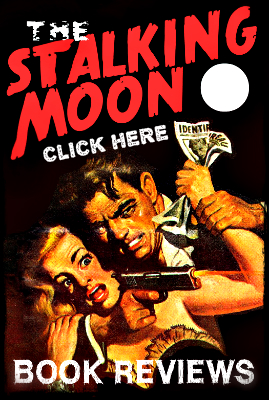

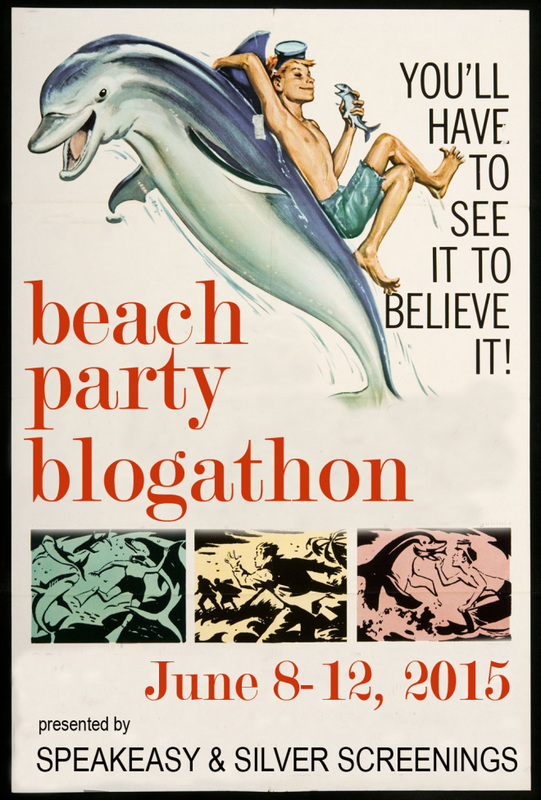
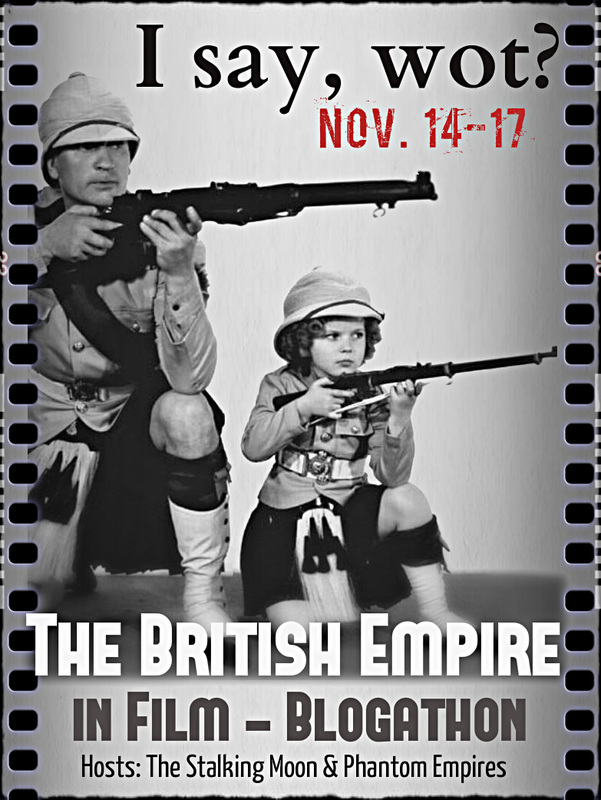


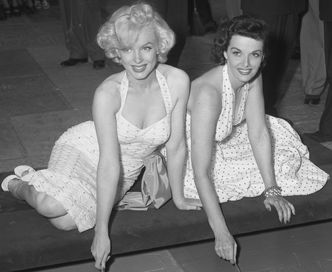
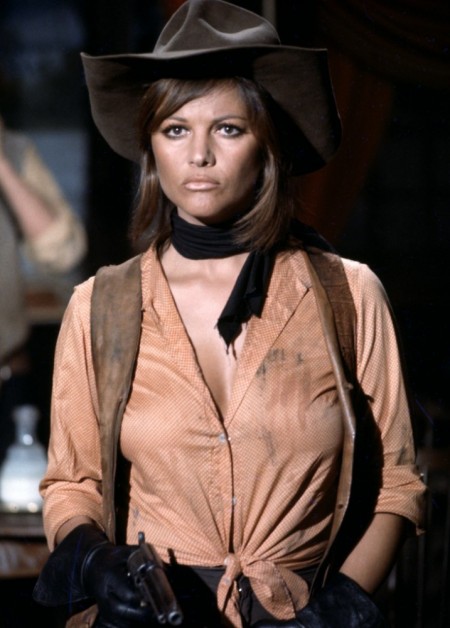























 RSS Feed
RSS Feed




